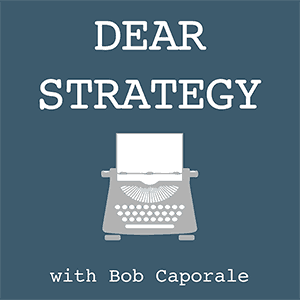Dear Strategy:
“How do you take multiple channel strategies and unify them into an overall strategy? Also, what does a world class strategy look like?”
There are two very big questions. And since I only have room for one very big answer, I’m going to address just the first question in this blog, and then you can tune into the podcast to hear the rest. (How’s that for click bait?!)
The implication of the question seems to be that multiple channel strategies may have evolved independently from some overarching product strategy. By the way, I only feel comfortable making this assumption because I’ve seen this happen SO many times in SO many different companies – mostly because the people responsible for the channel are rarely the same people who are responsible for the products. And that, in my opinion, really is a shame.
Here’s why…
There’s a big difference between a push strategy and a pull strategy when it comes to the channel. A push strategy involves putting your product on as many shelves as possible, with the idea being that if your product isn’t present, it isn’t going to be purchased. A pull strategy, on the other hand, involves literally “pulling” your product through the channel – meaning that you can be more selective in which channels you sell through because you know that end-users will be coming to those channels and asking for your product by name.
Needless to say, a push strategy is more appropriate for more commoditized products, while a push strategy is more appropriate for differentiated products that are in high demand. And, accordingly, push usually equals lower price and more competition in the channel, while pull usually represents higher, or at least more controlled pricing since you normally only have the most uniquely qualified and value-added channel partners participating in the marketplace.
So what’s the problem, you ask?
Well, in many organizations, the channel strategy is owned by the sales function. And the sales function wants to sell – usually in as many places as possible. So, you may end up getting a “push” channel strategy for what should otherwise have been a “pull” product.
In some companies, the channel strategy is owned by a dedicated channel team. In these cases, that channel team may have strong relationships with select channel partners that they want to support. This may result in a “pull” channel strategy for what should have been a “push” product.
In either case, the root cause of the problem is that the channel strategies and the product strategies aren’t aligned.
The short answer then, is for product managers to impart some level of influence over the channel strategies by specifying what those strategies should be within the context of their product strategies. If you get that part right, you’ll be one small step closer to what a world class strategy looks like…
Listen to the podcast episode
Dear Strategy: Episode 026

###
Bob Caporale is the author of Creative Strategy Generation and the host of the Dear Strategy podcast. You can learn more about his work by visiting bobcaporale.com.




